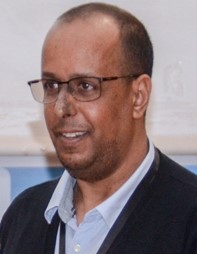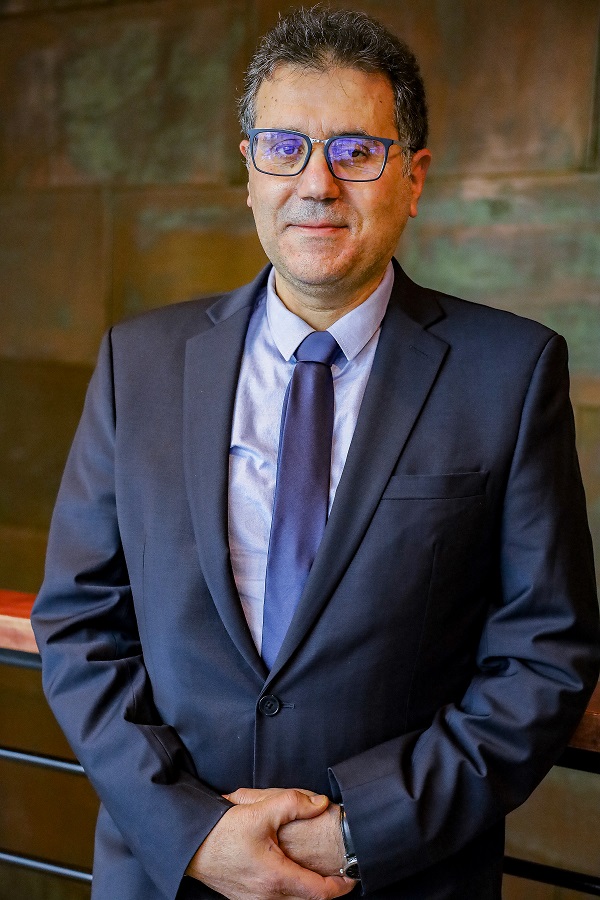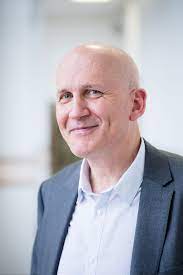A review of Numerical transparent Boundary Conditions used in unbounded domains for aeroacoustics problems
Mabrouk BEN TAHAR, Professeur émérite, Laboratoire Roberval,Université de Technologie de Compiègne, Compiègne France

In aeroacoustic applications, problems are often posed on large or unbounded domains. This problem is common to some engineering applications such as open cycle gas turbines, turbofan aircraft engines, etc. Numerical methods need efficient and easy techniques to truncate the computational domain without disturbing the solution of the original problem. Several efficient methods have been developed in the literature to cope with unbounded domain problem: the Non-Reflecting Boundary Condition (NRBC) methods using the operator commonly called Dirichlet-to-Neumann (DtN) based on an analytical representation of the external field and needing particular geometries; the Boundary Element Methods (BEM) which is another exact non-reflecting and non-local boundary condition whose main drawbacks are the singularity and the non-uniqueness of the solutions at some characteristic frequencies and the Infinite Element Methods (IEM) whose efficiency depends on the choice of the multipole expansion functions in the radial direction and on the truncation of the radial order.
An alternative approach to deal with the truncation of unbounded domains is the so-called Perfectly Matched Layer (PML) method. PML is based on the simulation of an absorbing layer surrounding the computational domain. This method is known as “perfectly matched” because the interface between the physical domain of interest and the absorbing layer does not produce spurious reflections (in theory and for continuous problem). The original PML form can lead to instabilities in time-domain. These instabilities are due to the presence of inverse upstream modes whose phase and group velocities have opposing direction.
To overcome this difficulty, a new spatio-temporal transformation has been proposed to consider the flow effects on these instabilities. In this presentation, we review these different techniques (advantages and disadvantages) with particular emphasis on the PML method and the latest developments that we have undertaken in recent years.
Emerging technologies in Mechatronics and Manufacturing: From Reinforcement Learning to drone swarm navigation
Moncef Hammadi, Prof. ISAE-Supmeca, 3 Rue Fernand Hainaut, 93400 Saint-Ouen-sur-Seine, France

In the context of Industry 4.0, this session explores the integration of cyber-physical systems in manufacturing and mechatronics. The discussion highlights the role of artificial intelligence, with a focus on reinforcement learning for disassembly optimization. We then explore advanced manufacturing techniques, emphasizing AI's application in Metal Additive Manufacturing and consistency in aerospace production. Further, we address autonomous mobile robot developments and drone swarm navigation challenges, underscoring the importance of unified models. Additionally, we introduce a methodology tailored for small and medium-sized enterprises to develop digital twins of their manufacturing equipment, ensuring cost-effective and scalable solutions. The session wraps up by examining multiphysics digital twins, symbolizing the convergence of the physical and digital domains.
Prédiction de l’apparition des instabilités matérielles et structurelles dans les tôles minces
Mohamed Ben Bettaieb, Arts et Métiers Institute of Technology, CNRS, LEM3, F-57070 Metz, France

Les matériaux métalliques jouent un rôle essentiel dans la production de diverses pièces et produits finis, en particulier dans les secteurs industriels et technologiques. À l'heure actuelle, les défis liés au changement climatique et l'augmentation des prix des matières premières poussent les producteurs et les transformateurs de tôles métalliques à repenser leurs méthodes de production et d'industrialisation pour répondre aux nouvelles normes environnementales tout en restant compétitifs. Cette amélioration requiert une conception avancée de nouveaux matériaux métalliques dotés de propriétés physiques et mécaniques optimales, telles qu'une faible densité massique, une haute résistance mécanique, une grande ductilité et une excellente résistance à la corrosion. De plus, le développement de ces nouveaux matériaux métalliques implique souvent une compréhension approfondie des mécanismes physiques en jeu lors de la déformation plastique des tôles minces. Les processus de mise en forme, tels que l'emboutissage ou le laminage, ainsi que les essais de crash peuvent provoquer l'apparition de défauts liés à des instabilités plastiques sur les tôles utilisées. Cela peut entraîner le rejet de séries entières de pièces et nécessiter des modifications coûteuses des processus d'industrialisation, telles que des traitements thermomécaniques ou des ajustements d'outillage. Ces instabilités peuvent être regroupées en deux catégories principales : les instabilités de type structure (flambement, plissement, retour élastique, etc.) et les instabilités de type matériau (striction diffuse et localisée, endommagement, etc.). L'apparition de ces instabilités représente le point de déformation ultime admissible pour une pièce, car ces phénomènes sont souvent des indicateurs précoces de la défaillance. Au cours de cette conférence, nous présenterons nos travaux les plus récents, à la fois sur le plan théorique et numérique, concernant la prédiction de la striction localisée et la modélisation du flambage plastique. Nous débuterons par une présentation du cadre général que nous avons développé au cours des dix dernières années pour prédire le phénomène de striction localisée, en mettant en avant nos résultats de recherche les plus significatifs. Ensuite, nous étendrons ce cadre pour aborder la prédiction du flambage plastique. Il convient de noter que cette dernière phase de recherche est récente dans nos travaux et est menée en étroite collaboration avec nos collègues de l'École Nationale d'Ingénieurs de Monastir.
Valorization of wood chips surplus for the production of bioproducts and bioenergy
Ahmed Koubaa, professor, Université du Québec en Abitibi-Témiscamingue, Institut de recherche sur les forêts, Canada

Canada is a world market leader in wood chips, with 16 million metric tons annual production. Most of these chips are destined for the paper industry. However, demand for pulp and paper has been steadily declining over the past decade due to a significant drop in demand for newsprint, competition from new producers worldwide, and the use of recycled paper in the production of the full range of pulp products, resulting in a surplus of chips for sawmills. Against this backdrop, we assessed various alternatives for wood chip recovery. Firstly, we assessed the possibility of solving the problem at source by modifying the wood fragmentation process to produce by-products other than wood chips, including flakes to manufacture oriented strand board (OSB) and particles to produce bioenergy and bioproducts. Secondly, we investigated some alternatives for modifying wood particles to produce insulation panels and high-performance biocomposites. Investigated wood modification alternatives included pyrolysis, steam explosion defibration, acetylation, and oxypropylation. In addition to developing bioproducts and bioenergy, this work explained some mechanisms of structural changes in wood fibers and their interaction with polymers.
Le MBSE, accélérateur d’amélioration de la production par l’adoption des concepts de l’industrie 4.0 et 5.0
Professeur Jean-Yves Choley, Laboratoire Quartz, ISAE-Supmeca

Keynotes System Engineering session : keynote 1